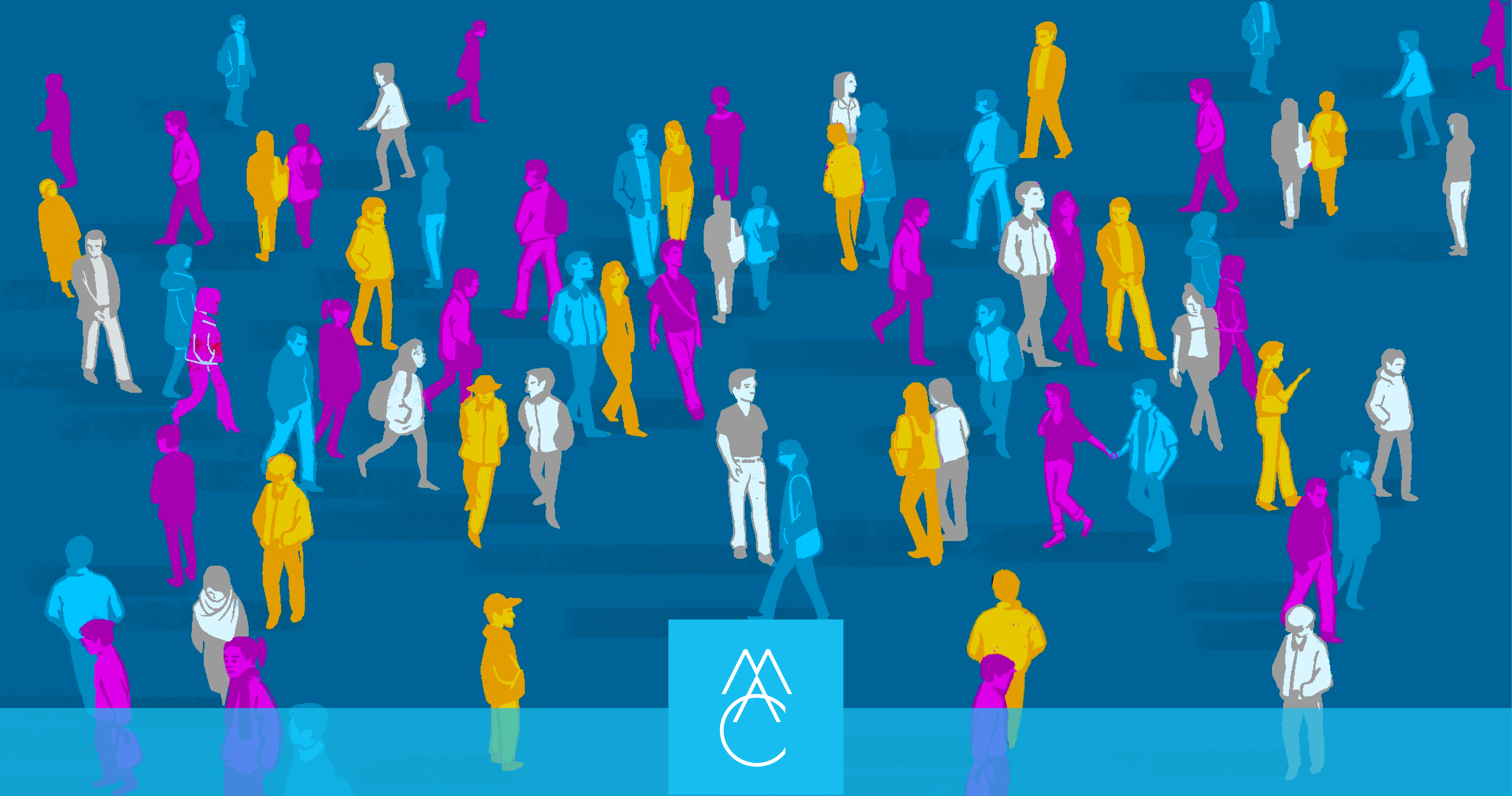
Communicating with Diverse Audiences
If your organization deals in community essentials such as education, healthcare, utilities, or transportation, you’re likely faced with a unique set of challenges when you communicate with the communities you serve. Why? Because the breadth and depth of your impact rests largely on your ability to communicate effectively with diverse audiences.
Diversity appears in many forms: language, culture, geography, ability, socio-economic background, age, technical competence, and more. So, while the simplicity of your organization’s message is already a crucial component for any brand seeking widespread recognition and memorability, it is doubly as important for institutions that serve the public good.
Not only must your communications be easily understandable at a brief glance by the average neighbor, but they also need to translate across complex cultural intersections and overcome the countless communication barriers represented by the melting pot we inhabit.
But how? We hear you: it can be hard enough to maintain a distinctive brand voice without these added complications.
In this article, we’ll detail our preferred methods and hard-earned insights for addressing the most common obstacles you’ll encounter when communicating with diverse communities; all while building a distinctive and recognizable brand.
Your audiences will inevitably vary in reading ability, cultural nuance, and even access to computers or high-speed internet. As such, there are numerous considerations to be made when targeting any given audience, crafting a message that resonates, and choosing the right channels through which to convey it. Let’s dig in.
Reading Level
Did you know that, according to the National Institute of Literacy, 54% of U.S. adults read at or below a 6th grade level? We encourage you to check out some examples of what a 6th grade reading level looks like (as it has likely been awhile since you were in the 6th grade yourself). You may be surprised at just how simple, brief, and free of nuance text must be to meet this standard.
Writing to the general public is crucial for reaching those who need your organization’s support the most. For higher education institutions who wish to attract a diverse pool of students, it’s key to remember that those who learned English as a second language are likely not at the same reading level as native-speaking applicants, and therefore need information about the educational opportunities you offer to be communicated in a plain and direct manner, free of wordplay and idioms.
If you’re a creative writer on a marketing team, it may be tempting to lean toward the poetic when you advertise services, programs, and promotions. However, that’s an instinct we have to set aside when writing to diverse audiences. At MAC, we view the ability to write in an accessible and mindful manner as the true mark of an excellent communicator.
Here are some questions you can ask to control the reading level of your communications:
- Am I writing compound sentences, with several clauses?
- Shorten them to one straightforward idea per sentence where possible, reducing the amount of words per sentence.
- Are my paragraphs lengthy?
- Stick to 2-4 sentences per paragraph.
- Is my word choice appropriate for the general public?
- Use common terminology—now’s not the time to show off your impressive vocabulary. Keep words as low in syllable count as possible, opting for a simpler synonym if possible.
- Am I using idioms, wordplay, or other forms of creative language that may confuse audiences with different native languages or varied cultural experience?
- Communicate directly. Sure, some billboards might call for a creative quip—but you can always work to ensure that everyone will ‘get’ it. We promise it’s possible.
You can use this website to test the readability of your text by grade level.
Cultural Nuances
When you advertise nationally (or globally, or even locally to a diverse community), there is always a risk that the language you use—whether you’re naming a service, campaign, or other promotional effort (or crafting a clever tagline)—may offend a subset of your audience. For example, Pepsi once rolled out the slogan “Pepsi brings you back to life”, which was misinterpreted in China when translated as “Pepsi brings your ancestors back from the grave,” a phrase considered off-putting and offensive to some.
Certain words, phrases, and even basic concepts may be funny or appealing to one culture while alienating or even disgusting another. In these cases, extensive research is essential. For instance, before naming your organization something unique and catchy, check that it doesn’t have an unsavory unappealing meaning in another language (a common issue for car brands, for some reason).
The key here? Research, research, research. Better yet, work with consultants or representatives of the communities you serve to have your communications reviewed before publication.
Technological Considerations
Despite advancements in internet access in recent years, many communities still lack high-speed internet, functional computers, and even the technical literacy to effectively decipher your communications (or determine their legitimacy).
In these cases, you must take a multi-pronged approach to communications. For rural communities, rather than only promoting an important message on your social media pages or your website’s “News” section for example, you can rely on more traditional grassroots channels such as an ad in the local newspaper, or sponsoring a billboard with high visibility.
Even preferred social media platforms can differ depending on an audience’s culture, age, and more. For example, today in 2024, Facebook is dominated by the middle-aged, while Whatsapp happens to be a popular choice among Indians and Latino. These trends are bound to change over time as well, so it’s important to stay abreast of these nuances as you target your campaigns and choose the appropriate channels.
Visual Considerations
Communications are just as often visual as they are verbal, and most imagery can mean different things to different groups. A priority in our work at MAC, particularly when crafting logos and icons, is to emphasize inclusivity while accounting for bias, whether cultural, socioeconomic, or otherwise. For example, in our work with the Oregon Department of Early Learning and Care, we spent hours in focus groups to ensure that all parties felt represented and considered by the visual direction we eventually took.
It’s easy to make assumptions about our neighbors: that they grew up with the same access to resources we may have had, or are familiar with the same imagery, or even have experienced essential relationships we often take for granted. Effective organizational communications rely on our ability to question those assumptions, carefully conduct the necessary research, and make the continual effort to be as inclusive and generalized as possible.
Website Accessibility
Your website is the digital ‘front door’ of your organization, so it’s an absolute necessity to make it accessible to diverse audiences. The most essential step is to adhere to the WCAG guidelines and ensure that your website performs well on devices of all shapes and sizes, i.e. ‘mobile responsiveness’. After all, 70-90% of your visitors will browse your website on their smartphone rather than a laptop.
If you expect users with different native languages to use your website, offering automatic or hand-written translations can be a significant boon to those seeking information and resources as well. There are several tools you can use to enable this functionality.
Lastly, the structure of your website is a key component of accessibility. Luckily, the world wide web has some standard practices that ensure most people can browse the average website with familiarity and ease. However, if your website does not follow common-sense content strategy and navigation guidelines, it can quickly become a bewildering maze for your visitors. So, be sure you’re making it easy and logical for your visitors to find the information they need and take the actions that will make a difference in their lives.
Building a Brand
You may be thinking, “Our voice as an organization has to be absolutely unique, but these considerations are limiting! How can we build a distinctive and recognizable brand under these constraints?” The answer: very carefully. Strong writers and marketers (who should be a priority-hire on your team or partner roster if brand-building is an ongoing goal) can craft and follow a ‘tone of voice’ using just a few simple words of guidance.
Though it requires practice, skill, and a deep understanding of what makes your organization special, it is completely possible. After all, a distinctive brand voice isn’t worth much if most people can’t even hear it.
Conclusion
With these tips in hand, hopefully you’ll feel more confident when crafting communications or directing marketing initiatives for your organization. When it comes to community essentials, the more people who can find, understand, and act upon your message and service, the better! Of course, this is just the tip of the iceberg—there are endless considerations when communicating with diverse audiences. Just put your best foot forward and keep listening.
Wondering what else you can do to make your organization more accessible to everyone you serve? Reach out to logan@madcollective.com and ask!
More Resources
-

Article
Generational targeting: From millennials to baby boomers, one message won’t computeAs business leaders and marketers, we know the importance of using different marketing strategies to reach specific audience segments. Despite...
-

Article
Find the Bullseye With MAC’s Brand Clarity & Messaging WorkshopHow will our organization capture the attention of the people we need to reach? Here at MAC, we’ve developed a...
-

Article
How to communicate your story and make it uniqueLet’s face it. There are a lot of businesses out there that are doing pretty much the same thing you...



